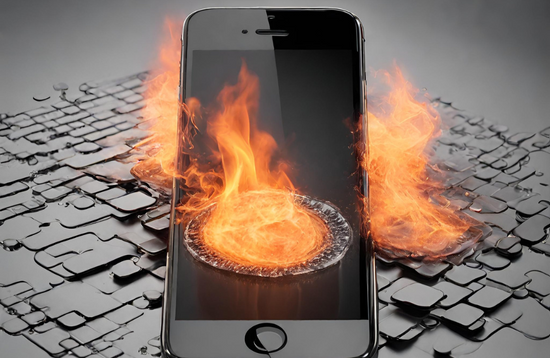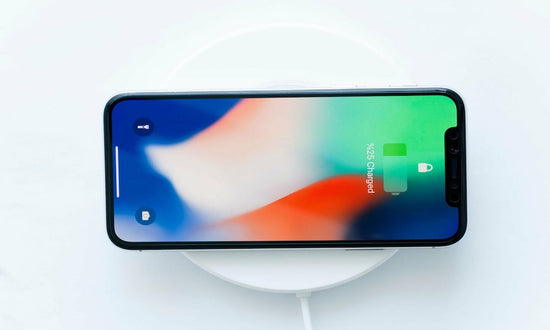Are you facing iPhone 15 battery drain fast issue?
We've all been there: you're out and about, relying on your iPhone to keep you connected, when suddenly you notice your iPhone 15 battery drain fast. It's frustrating, inconvenient, and can leave you in a bind.
Today, we'll break down why this happens and how you can solve it. Let's get started.
Causes of iPhone 15 battery drain fast

Several factors contribute to your iPhone 15 battery drain fast issue:
- Background App Refresh: This feature updates your apps even when you're not using them. It's convenient, but it can be a silent battery killer.
- Unnecessary Location Services: Some apps constantly track your location, draining your battery.
- Decreased iPhone's Battery Health: If you've used your iPhone 15 for a long time, it's natural for battery capacity to decrease.
- System Bugs: Older iOS systems or unexpected app issues can also cause your iPhone to drain faster.
- Hardware Problems: Issues like a bad battery or other flawed power components could be at fault.
There are other factors, too, but don't worry it's not as complicated as it sounds!
Below are the proven tips for how to fix iPhone 15 battery drain fast.
How To Fix iPhone 15 Battery Draining So Fast?

Solution 1: Turn Off the Background App Refresh

The Background App Refresh feature on your iPhone allows apps to refresh their content in the background when on Wi-Fi or cellular data. This means that even when you're not actively using an app, it may still be updating in the background, using information, and ultimately consuming battery life.
For example, a news app might refresh articles in the background so that the next time you open it, the latest news awaits you. Similarly, a weather app might refresh in the background to provide you with real-time updates. While this is convenient as it keeps your apps updated with the latest information, it does consume more battery power.
By turning off Background App Refresh, you're telling these apps to update and refresh their content only when actively using them. This can greatly reduce the amount of battery power these apps use, thus extending the overall life of your iPhone's battery.
Here's how you do it:
- Open the 'Settings' app on your iPhone.
- Scroll down and tap on 'General'.
- Tap on 'Background App Refresh'.
- You'll see a list of all the currently enabled apps to refresh their content in the background. You can turn off this feature for individual apps or toggle the 'Background App Refresh' switch at the top to the off position to disable this feature for all apps.
Remember, while this may help extend your battery life, it also means that your apps won't update in the background. You'll need to open them to get the latest updates or information. Weigh the benefits of having up-to-date information versus preserving battery life to decide what works best for you.
Solution 2: Fix Location Services

Location Services on your iPhone allows apps and websites (including Maps, Camera, Safari, and others) to use information from cellular, Wi-Fi, Global Positioning System (GPS) networks, and Bluetooth to determine your approximate location. While this feature can be very useful for certain apps, such as navigation apps that need to know your location to provide accurate directions, it can consume a significant amount of battery life, especially if many apps use the service simultaneously.
Furthermore, the 'Share My Location' feature allows you to share your location with other people through apps like Messages and Find My Friends. If left on constantly, this can also take a toll on your battery life. Lastly, under 'System Services,' you'll find a list of services that use your location for various purposes, such as 'Cell Network Search,' 'Compass Calibration,' 'Emergency Calls & SOS,' 'Find My iPhone,' 'HomeKit,' 'Location-Based Alerts,' 'Location-Based Suggestions,' 'Motion Calibration & Distance,' 'Setting Time Zone,' 'Share My Location,' 'Wi-Fi Calling,' and 'Wi-Fi Networking .'
While some of these services are essential for properly functioning your device, others like 'Location-Based Apple Ads,' 'Location-Based Suggestions,' or 'iPhone Analytics' are mostly used to collect data for improving user experience and marketing purposes.
Here's how to adjust these settings:
- Go to 'Settings' on your iPhone.
- Tap on 'Privacy'.
- Select 'Location Services'.
- If you want to turn off location services altogether, you can do so by toggling the switch at the top. However, keep in mind that this will disable location services for all apps.
- To stop sharing your location, tap 'Share My Location' and turn it off.
- Scroll down to the bottom and tap 'System Services'. Here, you can choose which services you want to have access to your location.
Turning off non-essential ones will not affect the functionality of your device but could help save battery life. You can balance functionality and battery life by managing your location services effectively, helping your iPhone 15's battery last longer.
Solution 3: Don't Send iPhone Analytics

iPhone Analytics, also known as diagnostics and usage data, refers to the information about how you use your iPhone, its apps, and how it's performing. This data can include app usage, consumption, service performance, and other statistical information.
Apple uses this data to improve its products and services. For example, if an app crashes on your device, an analytics report about the crash can be sent to Apple to help them troubleshoot and improve the app's stability in future updates. While this helps enhance the overall user experience, it can also consume a fair bit of battery life since these reports are generated and sent automatically in the background.
Here's how to disable it:
- Open the 'Settings' app on your iPhone.
- Scroll down and tap on 'Privacy'.
- Scroll to the bottom and select 'Analytics & Improvements'.
- You'll see an option labeled 'Share iPhone Analytics.' Toggle the switch next to it to the off position.
By turning this off, you're telling your iPhone to stop automatically sending these analytics reports to Apple. This means fewer processes running in the background, which can help save your battery life. However, this may limit Apple's ability to improve its services based on your usage patterns. It's a small trade-off that could make a difference if you're trying to maximize your battery life.
Solution 4: Turn Off Unnecessary Widgets

Widgets on iOS 14 and newer provide at-a-glance information from your favorite apps on your Home Screen. While convenient, they consume processing power and battery life as they constantly update with new information. Removing unnecessary widgets reduces the number of processes running in the background, thus saving battery life.
Here's how to do it:
- Press and hold on a widget you want to remove.
- Tap 'Remove Widget'.
Remember, only keep widgets that provide essential information to maximize battery life.
Solution 5: Disable Unnecessary Visual Effects

iPhones come with a number of eye-pleasing visual effects, such as the parallax effect (where your wallpaper appears to move slightly when you tilt your phone), app transitions, and other animations. While visually appealing, these effects require processing power to run, which in turn uses up battery life.
'Reduce Motion' is a setting that, when enabled, reduces the motion of the user interface, including the parallax effect. This means less work for your iPhone's processor, which can help save battery life.
Here's how to enable it:
- Go to 'Settings' on your iPhone.
- Tap on 'Accessibility'.
- Select 'Motion'.
- Turn on 'Reduce Motion'.
By doing this, you're essentially simplifying the visual experience on your iPhone to save on battery consumption. The change may not be very noticeable in terms of user experience, but it could significantly impact your battery life.
Solution 6: Check Battery Health

The 'Battery Health' feature on your iPhone provides information about your battery's capacity and peak performance capability. It shows how much of the original capacity your battery retains. A brand new phone has a battery health of 100%. Over time, as the battery in your device ages chemically, its health declines.
Here's how to check it:
- Go to 'Settings' on your iPhone.
- Scroll down and tap on 'Battery'.
- Tap on 'Battery Health'.
If the percentage is low (under 65% or 50%), your battery is significantly degraded, causing it not to hold as much charge as it did when it was new. This can lead to shorter battery life and even unexpected shutdowns when the battery can't deliver enough power. In such cases, Apple recommends considering a battery replacement to restore optimal performance and longevity. Replacing the battery could significantly extend the useful life of your iPhone and improve its daily battery life.
Solution 7: Check for iOS Updates
Apple periodically releases updates to its iOS operating system. These updates often include bug fixes, security patches, and performance improvements that can help extend your iPhone's battery life. An older version of iOS might have software bugs that cause the battery to drain faster, or it might not be optimized for newer apps and features. By updating to the latest version, you can ensure your device runs as efficiently as possible.
Here's how to check for updates:
- Go to 'Settings' on your iPhone.
- Tap 'General'.
- Tap 'Software Update'.
If a new iOS version is available, consider updating. The process may take some time and require a Wi-Fi connection, but it could improve your battery life. Remember to back up your data before updating, just in case.
Solution 8: Repair iPhone with ReiBoot, No Data Loss

A system refresh might be necessary if your iPhone's battery is still draining fast despite trying all previous methods. Sometimes, iOS system issues can cause abnormal battery drain and other problems.
ReiBoot is a third-party software that specializes in repairing over 150+ different iOS system issues. It works by reinstalling the firmware on your iPhone, giving your device a clean slate.
How to use ReiBoot:
- Download and install ReiBoot on your PC.
- Use a USB cable to connect your iPhone to your PC.
- Open ReiBoot and click on the 'Start' button. Then choose 'Standard Repair'. This option will repair your iPhone without erasing any data.
- ReiBoot will automatically select and download the correct firmware for your iPhone. The speed of this process depends on your internet connection.
- Once the firmware is downloaded, click 'Start Standard Repair. ReiBoot will then begin the repair process.
This process reinstalls the operating system on your phone without erasing your personal data. It's like performing a major 'clean-up' of the system while keeping your files intact. This can fix many underlying issues, potentially improving battery life, among other things. Remember, while ReiBoot is generally safe, always back up your data before making significant changes to your device as a precaution.
Bonus Tips
- Don't not forget to clean your charging port to prevent the iPhone 15 Overheating issue coming back again.You can read more about it here: how to clean your phone charging port
- Use authentic Apple charger, cables to avoid any 3rd party problems.
- To avoid battery running hot, try to use some thin phone case. We recommend Thinborne aramid fiber case.
Final Thoughts
It can be frustrating when your phone dies just a few hours after being fully charged. Luckily, there are solutions to this problem that you can implement right now. These eight tips can help you to fix iPhone 15 battery drain fast and keep your phone running smoothly. So, say goodbye to the frustration of constantly charging your phone and hello to a longer battery life. It's time to take control of your iPhone 15 battery drain fast situation.




